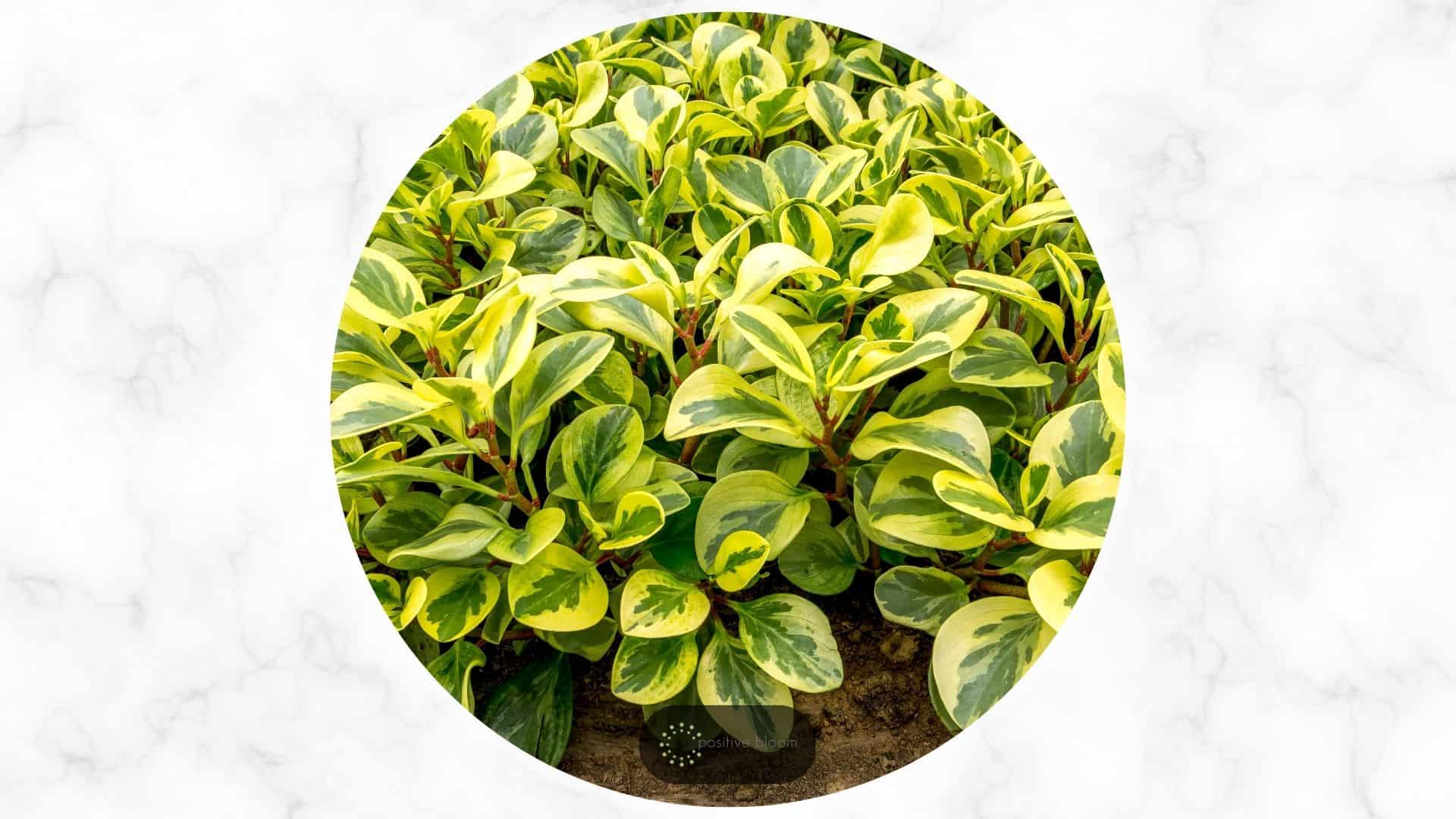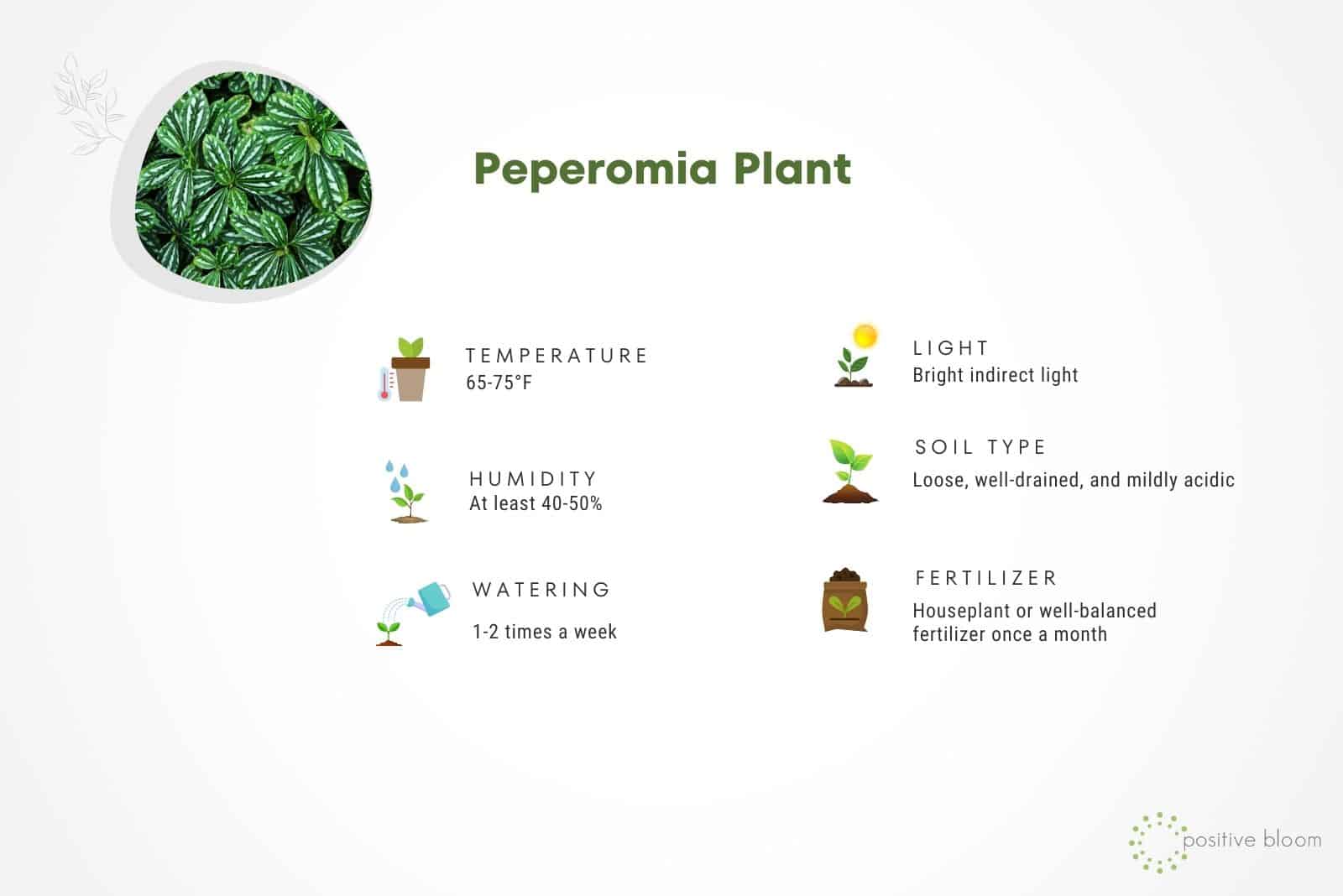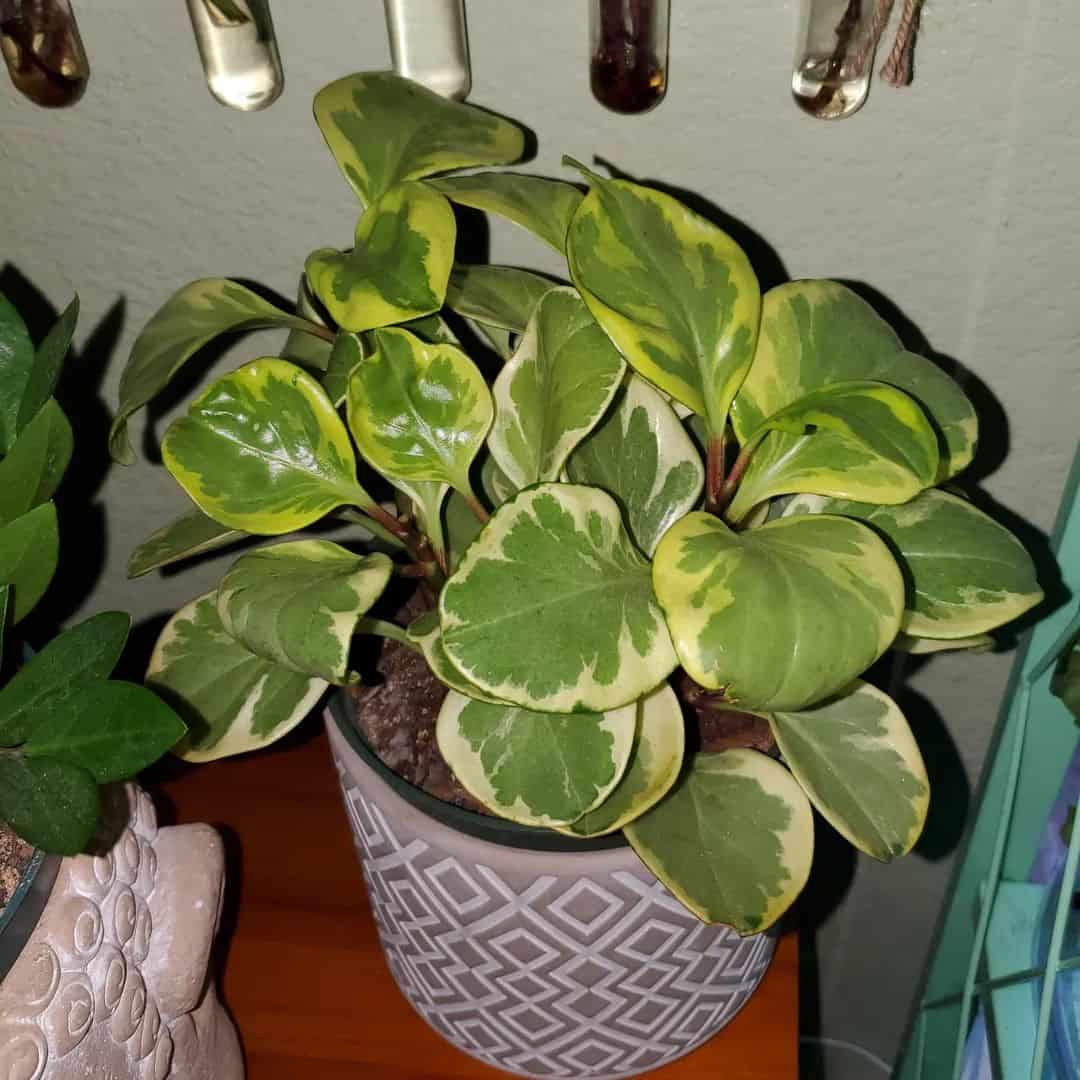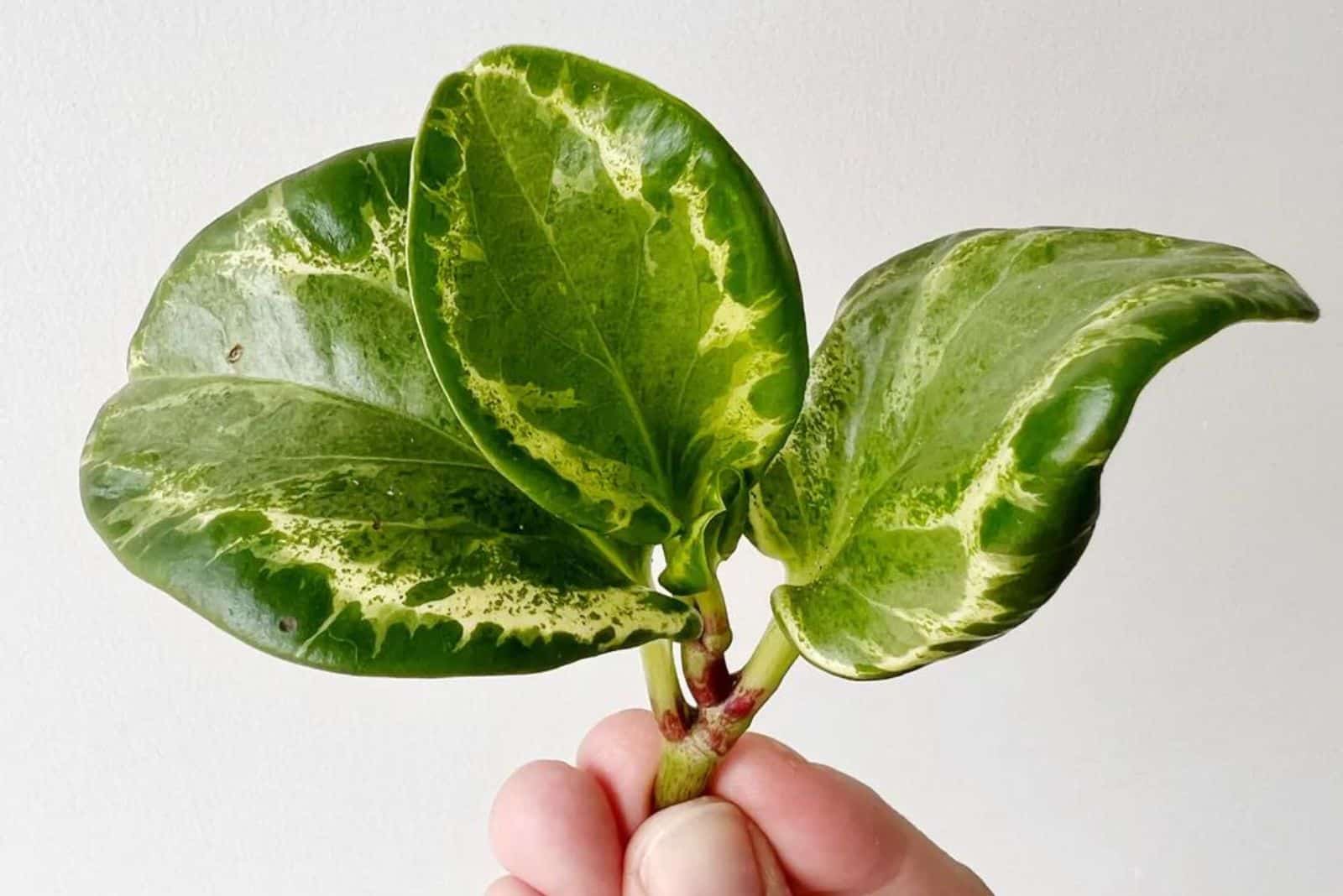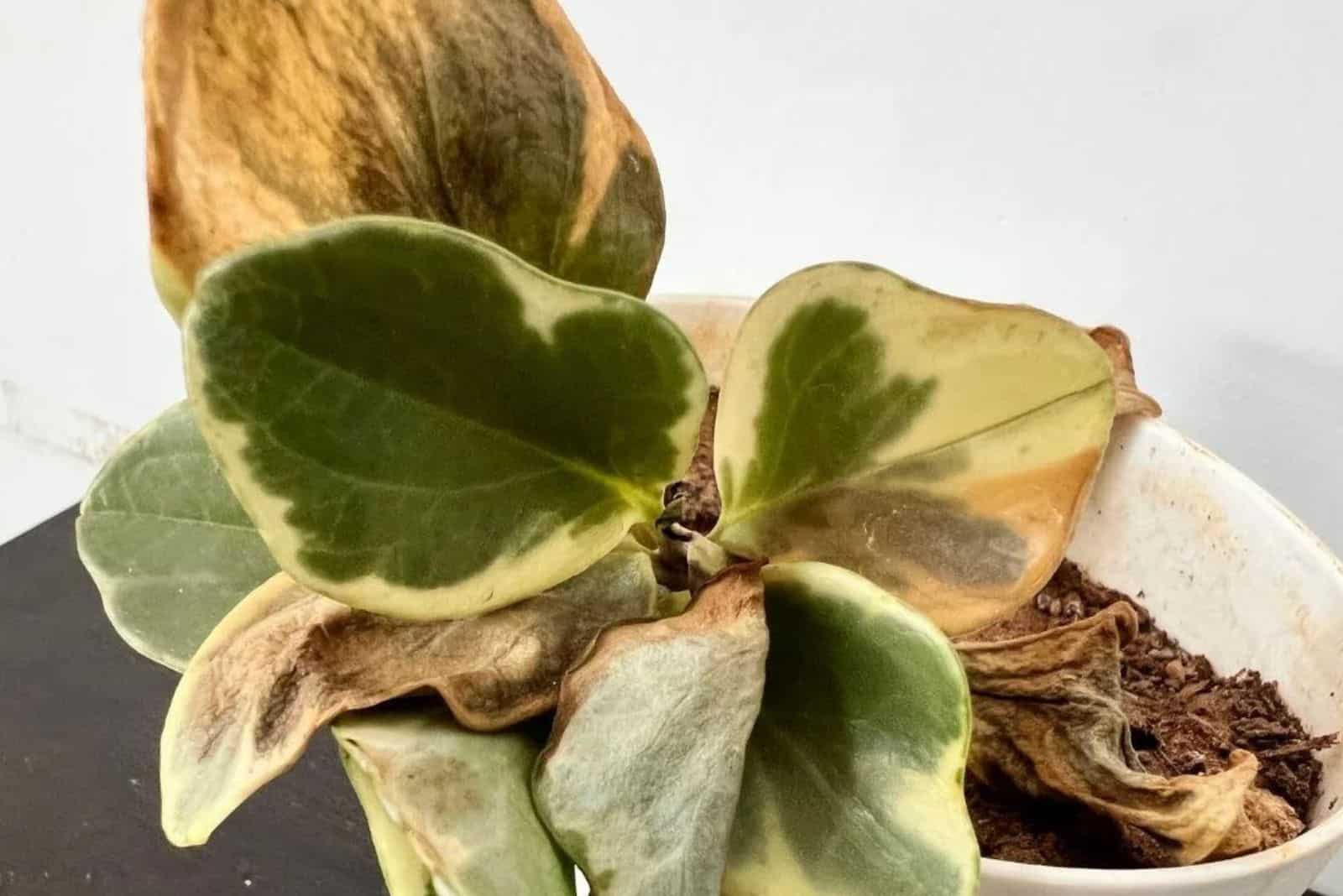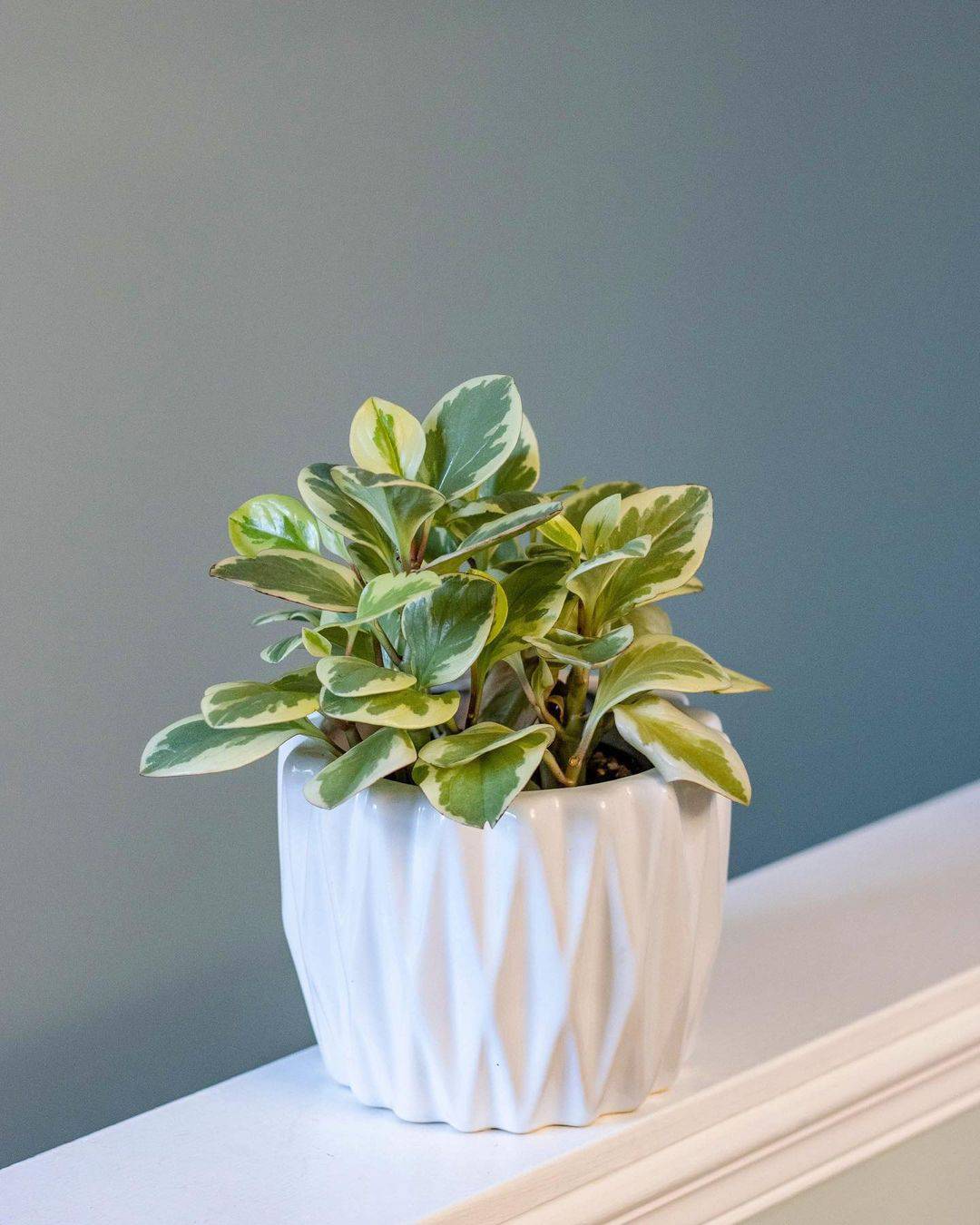The Genus Peperomia numbers more than 1,000 different species, many of which are famous for their textured or clean foliage, and grown as houseplants.
They’re easy to care for, which makes these plants desirable all over the world, and all you need to do is keep them in a bright location and give them some water.
Of course, every member of the floral kingdom requires a bit more care than that, so we’ll discuss the general needs of all peperomia plants.
This species also suffers from similar issues, which is why we’ll talk about the best and easiest ways of treating (and preventing) them.
Finally, there are so many types of peperomia plants out there that we couldn’t possibly describe them all. However, we’ll bring you some popular indoor varieties you can grow to enrich your garden.
Peperomia Plant Care
Whether you have a peperomia Ginny plant or any other variety from this genus, you’ll be glad to hear that their growing requirements are straightforward.
Peperomia plants require indirect sunlight, moist and well-draining soil, and high humidity. These plants are native to tropical and subtropical regions all over the world, including Central and South America, Asia, Oceania, and Africa, so you should try and mimic the growing conditions there.
This section will also discuss peperomia propagation, pruning, repotting, and some other basic requirements you should know in order to keep this tropical plant healthy.
Let’s get started!
Light Requirements
Peperomias thrive in moderate and bright light conditions, which is why you should always try to keep them near east or south-facing windows.
This species cannot tolerate direct sunlight, so make sure to protect them with a sheer curtain or a shade cloth if you grow them on west-facing window sills or outdoors.
Since they come from tropical rainforests, they can adapt to low-light levels better than some other plants, although their colors and variegations won’t be as intense.
And if you have no other option, you can even grow them under artificial lights to support their healthy growth.
Water and Humidity
Peperomias need a moist growing medium to flourish, but that doesn’t mean you should water them every day.
The care guide for Peperomia abricos and any other type suggests watering these plants only when the top several inches of the potting mix are dry.
Therefore, you should irrigate your peperomia plant 1-2 times per week during its growing season and less frequently once it enters dormancy.
Also, the amount of light exposure and the type of soil affect the watering frequency, so bear that in mind before irrigating your peperomia. (Plants in heavy substrates and low-light conditions need less moisture than those in loose mediums and bright light).
Furthermore, you should avoid wetting the leaves of this plant since that can lead to leaf spot, powdery mildew, and similar fungal diseases.
Instead, irrigate it at the base and in the morning so as to allow the foliage to dry out before night.
Humidity
Peperomia plant varieties are tropical species, so they thrive in humid environments. The good news is that they can tolerate more moderate air moisture levels of around 40-50%.
But just like any other tropical plant, these also prefer high humidity levels, which is why they’ll appreciate it if you turn on a humidifier or mist them from time to time.
You can also move them to a room with higher air moisture, such as a kitchen or bathroom. (Just don’t forget about their preferred light levels.)
Temperature
Peperomias like room temperature, so you should always keep the thermostat between 65-75°F.
And since they’re only hardy down to zone 10, they cannot handle temperatures below freezing; in fact, anything below 30-40°F would be quite detrimental.
You should also avoid keeping your peperomia near drafty locations such as old windows, vents, etc., since they experience temperature fluctuations that can stress out the plant.
Soil And Fertilizer
The best potting mix for peperomia types is loose and well-draining with a slightly acidic pH level. You can achieve all this by getting a peat moss-based medium from the garden center.
And if you’re not a fan of store-bought blends, you can always make one yourself; simply mix some regular potting soil, orchid bark, peat moss, perlite, and grit.
If you choose to make your own growing medium, ensure that the pH levels are between 6.0-7.0. Too acidic or alkaline substrates can hinder the absorption of minerals and moisture, leading to all sorts of problems.
Fertilizer
Fertilizing your radiator plants is crucial for their health, which is why you shouldn’t skip this step.
Apply some liquid houseplant fertilizer or a well-balanced one such as triple 10 once a month to keep your peperomias healthy and thriving.
You can also use slow-release fertilizer, but in that case, you won’t have to feed your plants more than 2-3 times a year (which is perfect for all you busy beavers).
Finally, always water your plants after feeding them as this helps release the nutrients immediately and prevents the fertilizer from burning the roots.
How To Propagate Peperomias
When we look at the care guide for the Peperomia angulata, we immediately notice that we can propagate it from stem and leaf cuttings. And the same goes for all peperomia plant varieties!
We’ll discuss both of these methods because they’re fairly easy, have a high success rate, and you’ll be able to create a nice little indoor jungle filled with variegated, dark green, and red peperomia plants.
Propagation Through Stem Cuttings
Step 1. The key to this method is taking a viable cutting. Cut the peperomia stem just below the node since this is the place from which the new root system will push out.
Step 2. Remove the bottommost leaves and place the cutting in a nursery tray filled with moist seed-starting mix.
Step 3. Move the stem to a warm spot (or place it on a heating mat) and expose it to bright light.
Step 4. Cover the cutting with a humidity dome or a plastic bag to maintain proper air moisture levels.
Step 5. Water the cutting whenever the medium begins to dry.
* You can reproduce your peperomia in water instead of potting medium. Simply fill a glass with water, change it every couple of days or whenever it gets foggy, and that’s it.
The roots will quickly appear if you multiply this plant in water, and once they get a more solid color (stop being translucent), you can move them to well-draining soil.
Propagation Through Leaf Cuttings
Step 1. Choose a healthy leaf that isn’t too old or too young, and cut it at the base.
Step 2. Cut the leaves in half and plant them in a moist and well-draining potting medium.
Step 3. Water the cuttings thoroughly and maintain consistent soil moisture over the course of propagation.
Step 4. Cover the leaves with a humidity dome, plastic wrap, or bags to trap the moisture in. If you didn’t punch any holes in them, you can remove them from time to time to give the cuttings some oxygen.
Step 5. Keep them in a warm place with plenty of bright indirect light.
Below, you can find some more amazing tips for multiplying this plant from leaf cuttings:
* You don’t have to cut the leaves in half; you can just plant them in the soil or put them in your propagator and water. These methods take longer, so bear that in mind.
Repotting
All plants need repotting every once in a while, and the same goes for peperomias. Move the members of this genus to a larger pot once you notice the roots coming out of the drainage holes.
Speaking of drainage holes, they are a non-negotiable part of planters for peperomias, so always use a container with at least one opening in the bottom.
The best time to repot the radiator plant is in spring because that’s when it actively grows and can adapt to its new home better.
Take it out of its container, put some potting mix into the new pot, plant your peperomia, and backfill it with more growing medium.
Water it deeply (until you notice water coming out of the drainage holes), and take it back to its usual spot.
Pro tip: You can plant your peperomia in a terracotta pot as they have better drainage and can combat waterlogging more efficiently.
Pruning
Since peperomias aren’t particularly vigorous growers, you don’t have to trim them very often. Still, you’ll want to remove any old, wilted, discolored, and diseased leaves in order to keep your plant healthy and looking good.
You can also prune it in order to reduce its size, and in that case, you might want to remove about a third of the entire plant.
And if you want to make it bushier, you can pinch a couple of top leaves to make it develop new stems.
(Of course, any sort of pruning will lead to new growth; you just have to leave some nodes from which new foliage can stem.)
Cleaning
Cleaning is an important part of every plant care routine, and that includes peperomias, especially those with large and showy foliage.
For instance, the care guide for the peperomia Rana Verde advises wiping the dust off of this plant’s foliage as soon as it appears, and the same goes for all other varieties.
Dust can interfere with photosynthesis, leading to weaker plants that cannot produce enough food and energy to sustain themselves.
Therefore, take a damp cloth and wipe the dust every couple of days or whenever you notice your peperomia’s leaves are dirty.
Common Issues With Peperomia Plants
Even though peperomia varieties are low-maintenance plants, they can still suffer from certain issues, such as pest infestations, diseases, and leaf discoloration.
Luckily, you can avoid dealing with these issues if you simply follow your plant’s care guide. But if something unexpected does happen, you can read about how to save your plant in the following sections.
Pests
Whether you own a beautiful Peperomia scandens variegata, a ripple peperomia, or any other variety, you’re likely to experience pest problems at least once during their lifetime.
The most common insects that invade these houseplants are mealybugs, spider mites, thrips, fungus mites, and aphids.
The key thing is to deal with the infestation as soon as you notice it so that the bugs don’t spread onto your other indoor plants.
You can use horticultural oils, insecticidal soaps, homemade pesticides, or some stronger synthetic ones to deal with the infestation.
And if you want a more organic solution, placing your plant under a stream of running water would knock off any bugs, or you can pick them one by one if the infestation is not severe.
Diseases
Common peperomia diseases are usually connected with inadequate moisture levels, and they include root rot, powdery mildew, leaf spot, etc.
Root Rot
The predominant disease that affects the peperomia plant is root rot. This fungal infection is caused by overwatering, which means we can easily avoid it simply by watering our potted plants once the soil at the top dries a bit.
Of course, a heavy potting medium and pots without drainage holes can also lead to this issue.
Therefore, if you notice symptoms of root rot in Peperomia, such as yellowing of the leaves, droopiness, stunted growth, wet soil, and an unpleasant smell coming from your plant, you should check its roots.
Mushy and dark roots are a sign of root rot, so you should cut them off, spray some fungicide on the healthy ones just to be sure the infection won’t come back, and repot your peperomia in a fresh potting mix.
Powdery Mildew
This disease thrives in high humidity levels and warm temperatures, which is why you should avoid wetting the leaves of your peperomia.
Thankfully, it isn’t that dangerous; it just reduces the surface area able to photosynthesize. If you catch it in time, you can treat it with some fungicide or even remove the foliage with powdery residue to make room for new growth.
Leaf Spot
Leaf spot manifests as brown or black circles at the edges, which spread across the entire leaf surface. It is another fungal disease caused by constantly wet leaves and warm conditions.
These lesions hinder photosynthesis, which is why you should prune and destroy the infected foliage as soon as you notice this sort of discoloration.
Since the majority of leaf spot infections are caused by fungi, you can spray some broad-spectrum fungicide to prevent them coming back, but you can consult at the garden center or with your local botanist.
Leaf Discolorations
There are a couple of reasons why leaf discoloration happens, and one of them is root rot.
Another more common cause of this phenomenon is lack of sunlight. A plant kept in too much shade cannot produce enough chlorophyll, which is what gives it its signature green color, hindering photosynthesis along the way.
On the other hand, too much light can lead to browning and crispy leaves, so you should find a balance and expose your plant to bright indirect light.
Lack of nitrogen can be another reason for yellow leaves, so make sure to fertilize your peperomias regularly.
Finally, before you start treating your plant for root rot and nitrogen-deficiency, or moving it to a different location, first find out what’s causing the discoloration, and only then do something about it.
Treating your plant for a problem it doesn’t have can do more harm than good.
Popular Types Of Peperomia Plants
The genus Peperomia is incredibly famous, so it’s not surprising that there are so many popular peperomia varieties people grow all over the world.
Here are just a few of them:
Peperomia obtusifolia – This variety has upright stems that bear glossy, spoon-like foliage. Some species are variegated and creamy with white colorings that break the dark green monotony.
Peperomia caperata – The ripple peperomia has many different cultivars we all love, such as the peperomia ‘Frost’ plant, ‘Rosso’, ‘Variegata’, etc. Its textured leaves are heart-shaped and store water, giving them that fleshy appearance.
Peperomia abricos – The textured leaves of this plant are dark burgundy and can even appear black framed with pinkish edges. The vivid red stems only accentuate the unique color, and you can use it to accompany your P. caperata.
Peperomia argyreia – This species is also known as the watermelon peperomia due to its silvery-green foliage that resembles tiny watermelons.
Peperomia albovittata – The albovittata species is usually colored with green and silvery stripes, although its heart-shaped foliage is commonly streaked with deep purple-brown lines.
FAQ
Do peperomias clean the air?
The clean air NASA study has proven that peperomias are among the plants that can clean indoor air and remove formaldehyde effectively (up to 47% according to Wolverton, who conducted additional research).
Of course, you do have to have plenty of these plants indoors to feel any difference, but they do work.
What is the lifespan of peperomias?
Peperomias are perennial plants, so they can live between 5 and 10 years, depending on the care you provide them with.
Are peperomias safe around pets?
Peperomia plants are not toxic to cats or dogs, whether you have a Peperomia caperata plant, ‘Rana Verde’ cultivar, or any other variety.
Final Thoughts
Almost every peperomia plant has the same requirements; bright indirect light, moist and well-draining soil, warm temperatures, and regular fertilization during its growing season.
These low-maintenance plants aren’t avid growers, so you don’t have to repot them very often. Of course, you should move them to a larger container once you notice their roots coming out of the drainage holes.
They also don’t require extensive pruning, but removing old and diseased foliage will keep your plant healthy and flourishing.
Peperomia plants can also get affected by pests or diseases, but if you water them only when the top of their potting soil begins to dry and expose them to plenty of indirect light, they’ll be fine.
Of course, they can suffer from leaf discoloration, so make sure you feed them regularly, don’t keep them in the dark, and water them properly.
Have fun with your healthy peperomias, and until next time!

